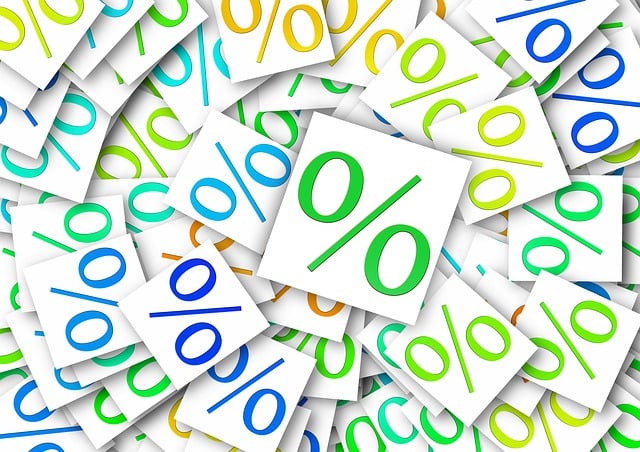Understanding wrinkle formation involves recognizing the interplay between intrinsic aging and extrinsic environmental factors. To reduce wrinkles, adopt a multi-faceted approach: protect skin from sun damage with SPF 30 sunscreen daily, incorporate retinol, peptides, and vitamin C into skincare routines, maintain a balanced diet and adequate hydration, prioritize quality sleep and exercise, explore non-invasive treatments like HIFU or Micro-Needling, consider surgical options for severe cases, and practice post-rejuvenation care to achieve and maintain youthful skin.
“Uncover the secrets to achieving and maintaining youthful skin with our comprehensive guide to skin rejuvenation. From understanding the science behind wrinkle formation to exploring advanced treatments, we delve into effective strategies for a radiant complexion. Discover the power of sun protection, discover top-rated skincare products, and learn lifestyle changes that can reverse signs of aging.
This article is your ultimate resource for everything related to wrinkle reduction, offering insights on non-invasive liftings, surgical options, and long-term care for a lasting youthfulness.”
Understanding Wrinkle Formation: A Comprehensive Overview

Understanding the science behind wrinkle formation is the first step in any skincare journey aimed at achieving youthful skin. Wrinkles develop due to a complex interplay of intrinsic and extrinsic factors, with age being a primary driver. As we age, our skin undergoes natural changes; collagen and elastin production decreases, leading to reduced skin elasticity and firmness. This loss of structural support is a significant contributor to the formation of fine lines and wrinkles.
Extrinsic factors, such as sun exposure, environmental pollution, and lifestyle choices, also play a crucial role. UV radiation from the sun breaks down collagen and causes oxidative stress, accelerating wrinkle development. Smoking and excessive alcohol consumption can similarly damage skin cells and contribute to premature aging. By recognizing these factors, individuals can implement targeted strategies for wrinkle reduction, such as adopting a consistent skincare routine, using products with antioxidants and retinoids, and protecting the skin from sun damage.
The Role of Sun Protection in Preventing Wrinkles

The sun, while providing essential vitamin D and brightening our days, is a significant contributor to premature aging, particularly wrinkles. UV rays break down collagen and elastin fibres in the skin, which are responsible for its firmness and elasticity. This breakdown leads to fine lines, wrinkles, and loss of skin volume over time. The good news is that sun protection can be an effective weapon in the battle against wrinkles.
Daily application of sunscreen with a high SPF (at least 30) is crucial to shielding your skin from harmful UV rays. It acts as a protective barrier, reflecting and scattering these rays away from deeper skin layers. By preventing collagen damage and inhibiting the production of melanin (which can lead to hyperpigmentation), sun protection not only reduces the appearance of existing wrinkles but also slows down the formation of new ones. Remember that consistency is key; wear sunscreen year-round, even on cloudy days, as UV rays can penetrate clouds.
Top Skin Care Products for Effective Wrinkle Reduction

When it comes to achieving youthful skin, one of the key areas of focus is wrinkle reduction. The market is flooded with various skincare products claiming remarkable results, but identifying the truly effective ones is essential. Top-tier skincare brands often offer formulations rich in powerful ingredients like retinol, peptides, and vitamin C, which have been clinically proven to minimize fine lines and wrinkles. Retinol, for instance, is a derivative of vitamin A that stimulates collagen production, plumping up skin and reducing the appearance of age spots.
Peptides are another potent tool in the fight against wrinkles. These chains of amino acids can penetrate deep into the skin, prompting the body to create more elastin and collagen. Vitamin C, a well-loved antioxidant, also plays a significant role in wrinkle reduction by brightening the skin, protecting it from environmental damage, and promoting even skin tone. Incorporating products with these key ingredients into your skincare routine can lead to noticeable improvements in skin texture and overall youthfulness.
Lifestyle Changes for a Youthful Glow

Achieving and maintaining youthful skin doesn’t just rely on topical treatments; lifestyle choices play a significant role in wrinkle reduction. One of the most effective ways to promote healthy, glowing skin is by adopting a balanced diet rich in antioxidants, vitamins, and minerals. These essential nutrients support collagen production, boost elasticity, and protect against environmental damage that accelerates aging. Incorporating plenty of fruits, vegetables, lean proteins, and whole grains can provide your skin with the nourishment it needs to stay supple and radiant.
Additionally, staying hydrated is crucial for maintaining skin health. Drinking an adequate amount of water helps improve skin texture, enhances elasticity, and promotes cell regeneration. Adequate sleep is another often-overlooked aspect; during sleep, our bodies repair and restore themselves, including our skin cells. Prioritizing quality sleep can contribute to a more youthful complexion by reducing dark circles and fine lines. Regular exercise further supports skin health by increasing blood circulation, which brings vital nutrients to the surface of your skin.
Advanced Technologies for Non-Invasive Liftings

The pursuit of youthful skin has led to a boom in non-invasive skincare treatments, and advanced technologies are now offering remarkable solutions for wrinkle reduction. One such innovation is High-Intensity Focused Ultrasound (HIFU), which uses sound waves to target and destroy elastic tissue that contributes to fine lines and wrinkles from the inside out. This process stimulates collagen production, resulting in a lifted and smoother appearance.
Another cutting-edge method is Micro-Needling with Radiofrequency (RF). This technique involves creating tiny punctures in the skin using fine needles, which then prompts the body’s natural healing process to produce new collagen and elastin fibers. The RF energy further enhances this regeneration, providing a more pronounced and lasting wrinkle reduction effect. These non-invasive lifting techniques offer safer alternatives to traditional surgery, appealing to those seeking subtle yet effective skincare solutions.
Exploring Surgical Options for Severe Wrinkle Concerns

For those with severe wrinkle concerns, exploring surgical options can offer a significant solution for wrinkle reduction. Procedures like face lifts, eye lid surgeries (blepharoplasty), and nasal reshape can address specific areas of aging, providing more youthful-looking skin. These surgeries are typically considered when non-invasive treatments have been exhausted, offering a lasting alternative to continuous topical applications.
Consulting with a board-certified plastic surgeon is essential to understanding the pros, cons, and recovery periods associated with each procedure. Advanced techniques have made these surgeries safer and more effective than ever, with many patients experiencing remarkable wrinkle reduction and improved facial contouring that can last for years.
Post-Procedure Care: Ensuring Optimal Results

After any skin rejuvenation procedure, proper post-care is essential for achieving and maintaining optimal results. This includes keeping the treated area clean and moisturized to support healing and prevent infections. It’s crucial to avoid exposing the skin to harsh conditions or substances that could irritate it. For instance, steer clear of extreme temperatures, heavy exercise, and direct sunlight without protection during the initial recovery period.
Additionally, follow any specific instructions provided by your dermatologist regarding products to use on the treated skin. Gentle, hypoallergenic cleaners and moisturizers are generally recommended. Avoid using exfoliants or retinol-based products for a few days after treatment as these can cause further irritation. Remember, patience is key; give your skin time to heal naturally, and you’ll be rewarded with smoother, younger-looking skin with reduced wrinkle appearance.
Long-Term Strategies for Maintaining Rejuvenated Skin

Maintaining youthful skin isn’t just about quick fixes; it’s a long-term commitment to healthy habits. One of the key strategies is consistent sun protection. Regular exposure to UV rays accelerates aging, leading to wrinkles and pigment changes. Incorporating broad-spectrum sunscreen daily, even on cloudy days, can significantly delay these effects.
Additionally, a balanced diet rich in antioxidants, vitamins, and minerals supports skin health from within. Staying hydrated by drinking enough water also plumps the skin, reducing the appearance of fine lines. Regular exercise improves blood circulation, nourishing skin cells and promoting collagen production. These holistic approaches to skincare work synergistically to achieve and maintain rejuvenated skin over time, focusing on prevention as much as treatment for effective wrinkle reduction.
